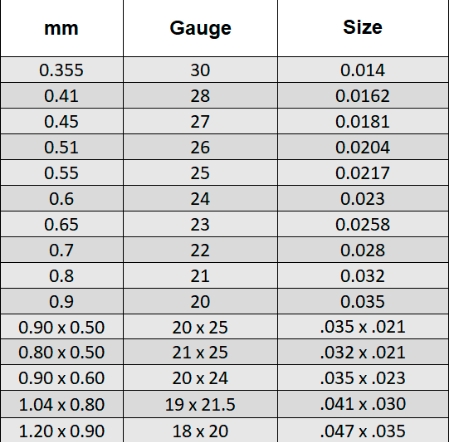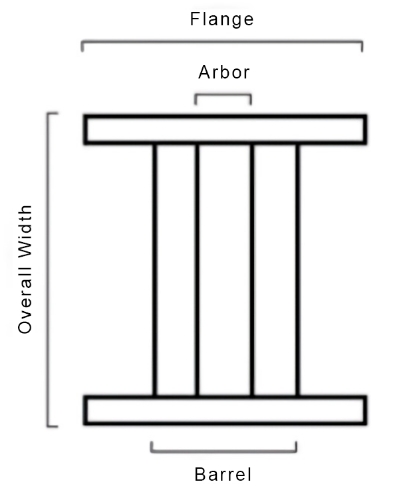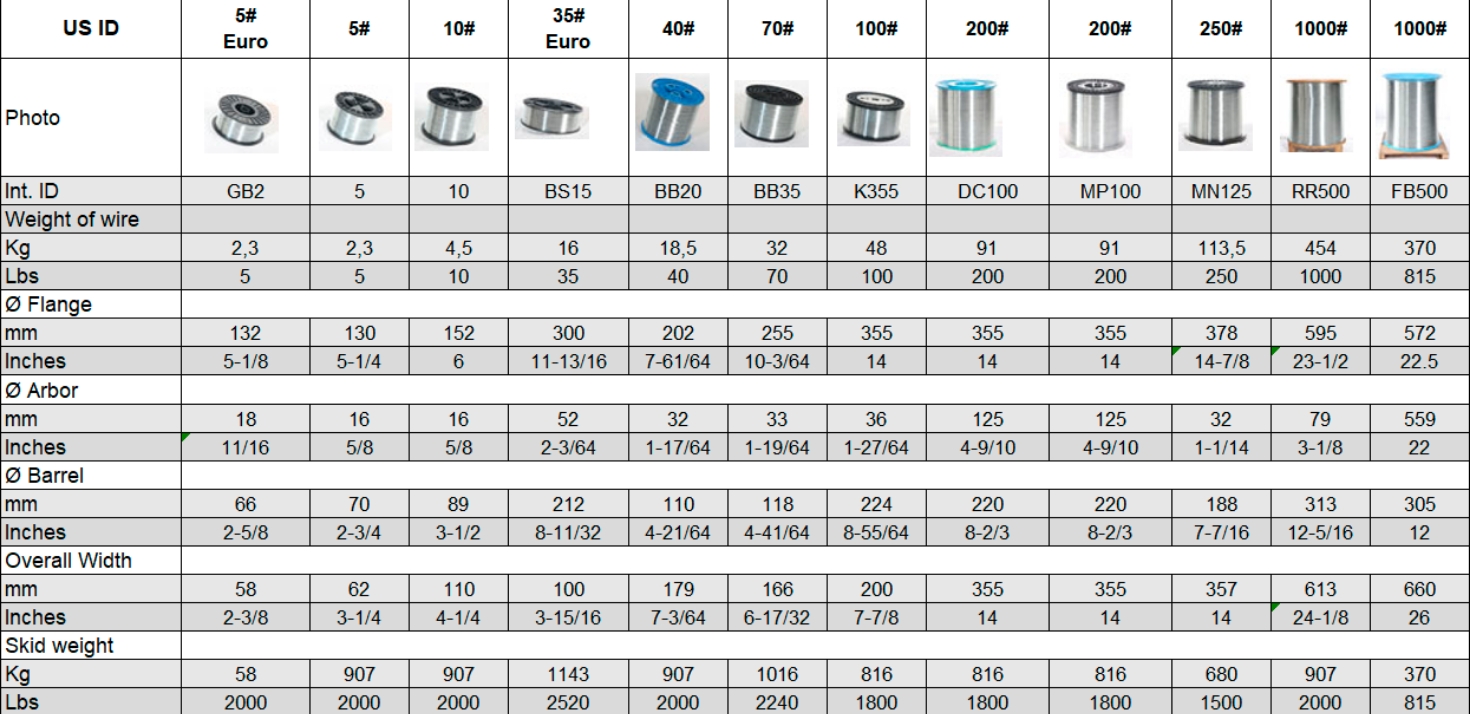Stitching Wire
In today’s world of commercial printing, stitching wires are used in two areas, the bindery and the pressroom. Quality of finish, size, cast, camber, tensile, path of wire, spool sizes and despoiling equipment are all major factors in how the stitching wires are going to perform in the field. L.A. Grinding supplies the highest quality galvanized stitching wires on the market today. With multiple warehouses throughout the country, we are always stocked with 5 lb spools all the way up to 1,000 lb spools with many different gauges available.
Finish Quality
The ideal wire exhibits a chrome-like appearance and incorporates special friction-reducing additives, effectively preventing peeling and flaking.
Furthermore, it offers superior workability in various bending and forming applications.
Buy Stitching Wire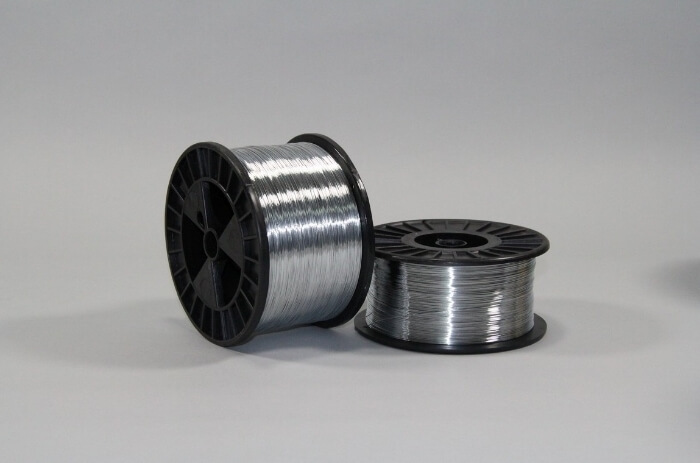
Cast and Camber (Helix)
Stitching wire spools, as it’s commercially produced, doesn’t maintain a perfectly straight form. Different spool sizes come with a preferred curvature for the wire. This curvature is categorized into two aspects: “Cast” and “Camber.” “Cast” refers to the radial or circular curvature, which is measured as the diameter of a free turn of wire. On the other hand, “Camber” pertains to the axial component and is measured as the offset in the ends of one turn of freely hanging wire.
High-quality stitching wire is characterized by having a substantial cast and minimal camber. These features enhance its performance by allowing the wire to smoothly enter the stitching head, resulting in reduced drag and fewer dropped stitches. Consequently, the stitching head operates more efficiently, requiring less energy and maintenance.
Tensile Strength of Wires
Wire Tensiles, quantified in pounds per square inch (PSI), represents the force required to fracture the wires. The wires stiffness is directly related to its breaking point; the higher the tensile strength, the stiffer the wires. For top-notch stitching wires, the ideal tensile range falls between 135,000 to 165,000 PSI. Tensile strength exceeding 165,000 PSI can lead to premature wear and increased maintenance costs for your stitching head, as well as downtime. Furthermore, high tensile wire can accelerate the wear and tear of a trimmer section’s knives, particularly when it strikes during saddle stitcher jams. Conversely, a tensile strength below 135,000 PSI renders the stitching wires too soft, hindering its ability to form a proper stitch.
While high tensile round stitching wires are available in the market, it’s essential to weigh the cost benefits carefully. The advantages of using a high tensile wire with a thinner diameter for thicker applications may be offset by the expense of premature wear on stitching heads and trimmer section knives.
Wire Route
Ensuring an unobstructed route for the stitching wire, stretching from the spool to the stitching head, plays a pivotal role in achieving successful stitching results. It is crucial to safeguard the integrity of the stitching wire coatings, as they are susceptible to chipping, scraping, and damage when they come into contact with unprotected steel brackets, worn wire guides, spring tubes, and soiled felt pads.
Regular inspection and timely rotation or replacement of these components are imperative. Wire guide springs and felt pads are regarded as standard wear items for any stitching head. The presence of flat spots on the guides and springs, coupled with a contaminated felt pad wiping system, can give rise to flaking issues, leading to stitching head jams, production halts, and escalated maintenance and repair expenses.
Get your Stitching Wire Fast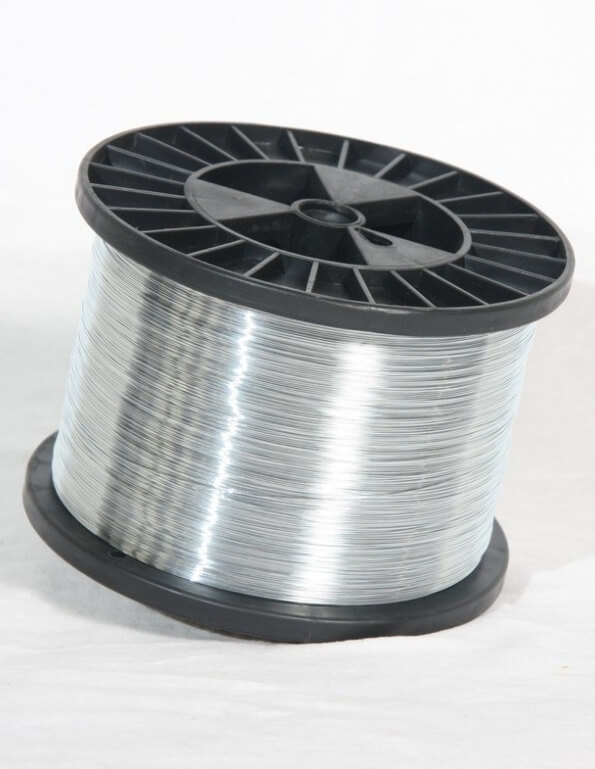
Choose the Correct Stitching Wire Diameter
The predominant stitching wire utilized in contemporary binderies and in-line stitching operations is typically either 24 or 25 gauge. While the size difference between 24 Gauge (.023″) and 25 gauge (.0204″) may appear minuscule at .0026 inches, it has a significant impact on overall yield.
For instance, 24 Gauge wire yields approximately 8,496 inches per pound, whereas 25 Gauge wire yields around 10,800 inches per pound. This results in a substantial 21.3% disparity in product yield. In practical terms, if you envision each staple or stitch as being one inch, opting for 25 Gauge wire over 24 Gauge would provide an extra 2,304 staples.
Round Stitching Wire, Stitching wire direct or Boxed Stitching wire? How to choose the Correct Stitching Wire Diameter?
These recommendations are provided as general guidelines, recognizing that the specific stitching wire size can be influenced by factors such as paper type, paper density, coatings, and the setup of the stitcher.
It’s advisable to physically verify the size of your stitching wire and not rely solely on the label until you’re confident. An oversized wire, even if it’s labeled as 25 gauge, but is actually larger in size, results in you not receiving the value you expect.
Oversized wire not only significantly impacts the overall yield of your wire but also contributes to higher postage costs at the post office.
Spool Specifications and Unwinding Machinery
Stitching wire is available on a variety of spool sizes, ranging from 5 lbs to 1600 lbs. The choice of spool size is typically determined by the specific application and machine type, but factors like operating speeds and available workspace also come into play. Stand-alone stitchers that are manually fed often utilize 5 or 10 lb spools. Collators with stitchers used for shorter production runs, ranging from 5 to 10,000 books, can also make use of these smaller spools. When it comes to saddle stitching for longer, mid-range runs, spools with capacities of 35, 40, 70, or 100 lbs are employed. High-speed saddle stitchers and web operations employing in-line stitchers tend to utilize larger spools, such as 200, 250, 1,000, and 1600 lbs.
Larger spools offer both economic and production advantages, as they typically cost less per pound of stitching wire to manufacture and require fewer spool changes during the manufacturing process. Additionally, different spool sizes possess distinct characteristics that can provide benefits to end users. For instance, as mentioned earlier, spools with larger circle diameters enhance stitching head performance by reducing friction, thereby necessitating less wire straightening and resulting in fewer dropped stitches. The larger diameter spools, including the 200, 250, 1,000, and 1600 lb varieties, are particularly effective in this regard.
Effective unwinding equipment is crucial to complement the use of top-quality wire. It is imperative to ensure that the appropriate unwinding system is paired with the spool to maintain smooth and trouble-free production.


